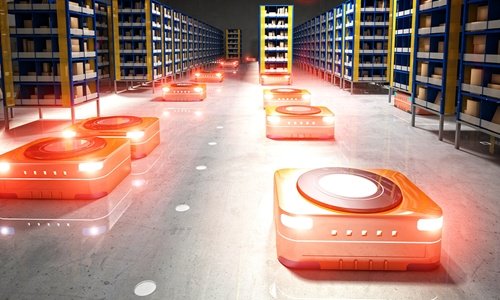
The global warehouse automation and automated storage and retrieval system market is positioned for strong growth in the coming years, Daedal Research found. This health is driven by:
- Increased disposable income around the world.
- The rapid rise of the e-commerce sector.
- Urbanization.
- Improved cost efficiency within the warehouse automation sector.
Organizations hoping to keep up with their competitors in the race to adopt warehouse automation have plenty to consider. Here are a few of the most important issues to keep in mind to find success with warehouse automation:
Prepare for Autonomous Vehicles
Warehouse operators are embracing self-driving robots that can help with picking and order preparation.Robots depend on data to make their decisions.
Warehouse operators are embracing self-driving robots that can help with picking and order preparation. Boxed recently announced an initiative to automate picking at its manual warehouses. This would alleviate the operational burden on human workers and allow for faster picking, Chain Store Age reported. Similarly, IAM Robotics, one of the leading players in the automated picking robotics market, recently received a patent for a mobile robot that can handle asset picking processes or assist with putting away goods on shelves, Modern Materials Handling reported.
Businesses that want to be ready for an automated warehouse need to seriously consider how autonomous picking machines will change operations. This can impact everything from taking a new look at floor space optimization and routing to training human employees to work side-by-side with robots. While fully automated warehouses are possible, mixed environments with humans and robots working side-by-side are likely to be most common as companies go through this migration period.
Don’t Set Low Expectations
A heavily automated warehouse may seem like a pipe dream beyond the reach of your fiscal resources. However, emerging technologies are becoming more accessible all the time. A Logistics Management report explained that businesses have access to a wide range of solutions and leveled the playing field between large warehouse operations and smaller, more niche organizations. Corwin Carson, chief revenue officer for InVia Robotics, explained that the warehouse automation market has gone through a major transition.
“There are still casualties out there, but it’s getting to the point where the market has shifted from panic to asking, ‘What are the right ways forward?'” Carson told the news source. “The solutions are available today, and innovative technologies are transitioning from the hopeful betas and pilots to real deployments and real throughput.”
Get Your Data Systems in Order
Warehouse operators are embracing self-driving robots that can help with picking and order preparation. Robots depend on data to make their decisions.
Warehouse automation systems depend heavily on accurate real-time data. Mobile data collection and ERP integration are absolutely critical under these circumstances. As organizations automate warehouses, they become incredibly reliant on constant updates when new goods arrive in the warehouse, new orders are processes and asset levels fall to the point that a procurement order needs to be filed.
Robots rely on data to make their decisions. Machine learning and artificial intelligence technologies are heavily dependent on constant, ongoing data analysis to update decision-making within the software. Businesses that fall behind on their ability to collect data across their supply chain limit their ability to automate the warehouse because they won’t have the information systems in place to rely on robots.
Organizations can’t just leap into warehouse automation unless they have the capital and resources to launch a new facility with all the backend IT systems needed to support robotics. In most cases, organizations will need to update their systems in iterations, picking and choosing where to make improvements as they build toward highly automated environments. RFgen can help companies take the first steps toward a modern, efficient warehouse through mobile data collection solutions that can provide a powerful, user-friendly way to help businesses keep up with the demand for data throughout the supply chain.





